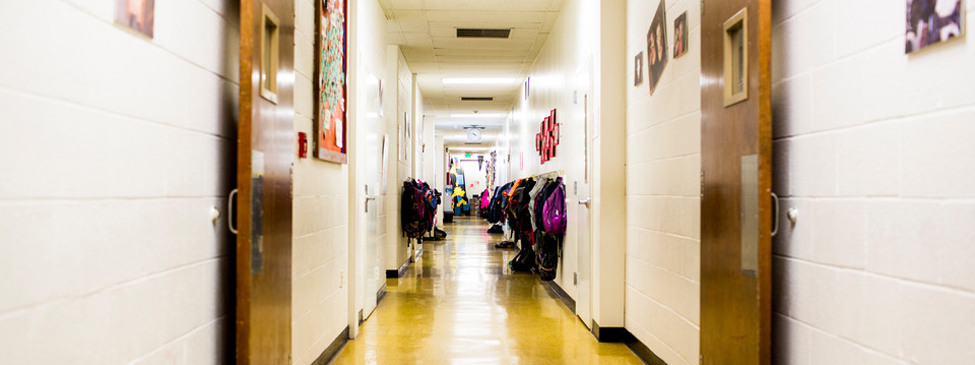Hanna Skandera is the New Mexico Secretary of Education. During her nearly six-year tenure, Secretary Skandera has stood by bold initiatives to close achievement gaps, hold schools accountable for their performance, champion teachers, and give kids access to the higher standards they need to be successful in college or career. After getting to know Secretary Skandera while serving as her Chief of Staff for one year, the two of us sat down to talk more about the changes she has helped usher into New Mexico, and the progress the state has made since.
What do you believe has changed for families in New Mexico since you became State Secretary?
When I first started, there was an overwhelming culture of low expectations. I've been to almost every single district here and too many times, I heard, “Our kids are poor, so what do you expect?” My answer was, “I expect that every single kid can learn and be successful,” but that belief was not always so pervasive. A lot of folks embraced low expectations.
I think we have a long way to go when it comes to changing the culture across the state because that doesn't happen overnight. But I was in Target recently and a father said to me, “Please don't stop. We know you're making a difference for our kids.” At the airport, a gentleman said, “I know who you are and we believe.” A grandma in a small town said, “I don't know everything you do, but I know that everyone is talking about education at the dinner table for the first time.”
What this says, to me, is that the families and communities we serve believe in our kids and can tell when we are doing right by them. Of all the things we’ve done, I’m most proud of making a fundamental shift from embracing a culture of low expectations to one that believes in the success of every single one of our kids.
As you think about New Mexico’s shifts over the last several years, particularly around more challenging instruction, what are you learning?
We are encouraged because New Mexico is making progress. Just from last year to this year, we have 7,300 more kids on grade level in math and 5,000 more in reading. Not only that, they're ready according to higher standards than they’ve ever had. We have early evidence that students who are on grade level according to PARCC when they finish high school go to college not requiring remediation. That’s big. Right now, nearly 50 percent of students in New Mexico require a remediation course when they go to college. The changes needed to see this success were hard, but results like these give us confidence that our effort is worth it.
New Mexico is a majority minority state with a large population of English language learners and Latino students. What kind of progress are you making in schools that primarily serve diverse populations of students?
Districts who have embraced reforms are seeing success. Gadsden, a district that serves kids who cross the border every day for school, is way above the statewide average in reading and math, and almost triple statewide ELL averages. The difference is these kids are being held to a high bar. Recently, I visited one of my favorite schools near the border, Anthony Elementary. They're consistently one of the top ten schools in our state. I looked at the principal and said, “What's happening here?” She looked back and said, “We believe every child can learn and we hold ourselves accountable for helping them.”
Are there shifts that haven't gotten much attention so far, but have been key to the success you’re seeing in the state?
Moving to an A to F school grade rubric helped us hold ourselves accountable for the high expectations we set for students, teachers, and schools. When I got here, the system we had did not capture if schools were making improvements when it came to student learning. In our new grading system, 70 percent of an elementary school’s grade and 45 percent a high school’s grade is based on growth.
With growth, we can not only capture how our students are performing on grade level, but we also know whether we’re closing achievement gaps. Looking at growth, as opposed to just raw proficiency, helps us better see where progress is being made and recognize the incredible job our teachers and school leaders are doing to drive student learning. Accurately rating schools also provides true transparency for families and students to know how well their school is doing overall.
Another key reform was making our teacher evaluations 50 percent based on student achievement over a three-year period. There was a lot of push back, but prior to that, 99 percent of teachers were receiving the same evaluation: “meeting competency.” We wanted to better capture what they struggled with and the growth they were making. As we look at the results over the last few years, we now have a better spread of teachers that fall in categories such as “exemplary,” “highly effective” or “minimally effective.” That allows us not to say which teachers are really doing great and which ones are struggling, but instead, think about how we can get our best teachers mentoring those who want to improve.
What is one thing you haven’t done so far that you think would complement what you have accomplished?
Better ensuring every child has access to a high performing school regardless of their zip code or neighborhood. In addition to working to improve existing schools, I also think one way to realize the dream of equal access is through a robust charter school community. When communities, parents, and kids have options to choose a school that meets their needs, we have a stronger K-12 system in New Mexico. I think we're on our path to that, but we have work to do around the quality of our charter schools.
Right now, over a third of our schools are A and B schools We’re beginning to move the needle, but it's never fast enough when we're talking about our kids and their future and whether or not we're setting them up for success. I think providing more options and choice for parents and students to make decisions in the best interest of their learning needs is important and charters can play a critical role in that.
There are so many innovative approaches to education, whether that's through new technology to support teachers and students, integrated programming or personalized learning. I fundamentally believe many of our students fall through the cracks in a one-size-fits-all system. To make sure we're challenging every student, I think we have to differentiate and change the way we orient some of our schools.
What advice would you give to another state leader looking to make changes that will help kids, but perhaps won't be unanimously approved of right away?
First and foremost, never lose sight of why we have the privilege to serve in a position like this. You, as a leader, have the chance to constantly keep the conversation focused on kids and their success. It is easy to lose sight of that because there's so many other adult issues, noise about politics, or other day to day challenges. The best advice I can give is keep your eye on why you started in the profession and on the belief that kids are awesome and can fulfill their potential.
Surround yourself with a team that believes that and has the same conviction and courage. Buckle your seat belts and make sure you're ready to not give up, because there'll be plenty of opportunities to do that. If you want to see returns on the potential of our kids, you must persevere.
I believe a commitment to reforms is a commitment to kids and their opportunity to have access to a great education no matter their zip code, race, or background. We weren’t living up to that ideal for kids in New Mexico before, and we are now on the path to change that.







